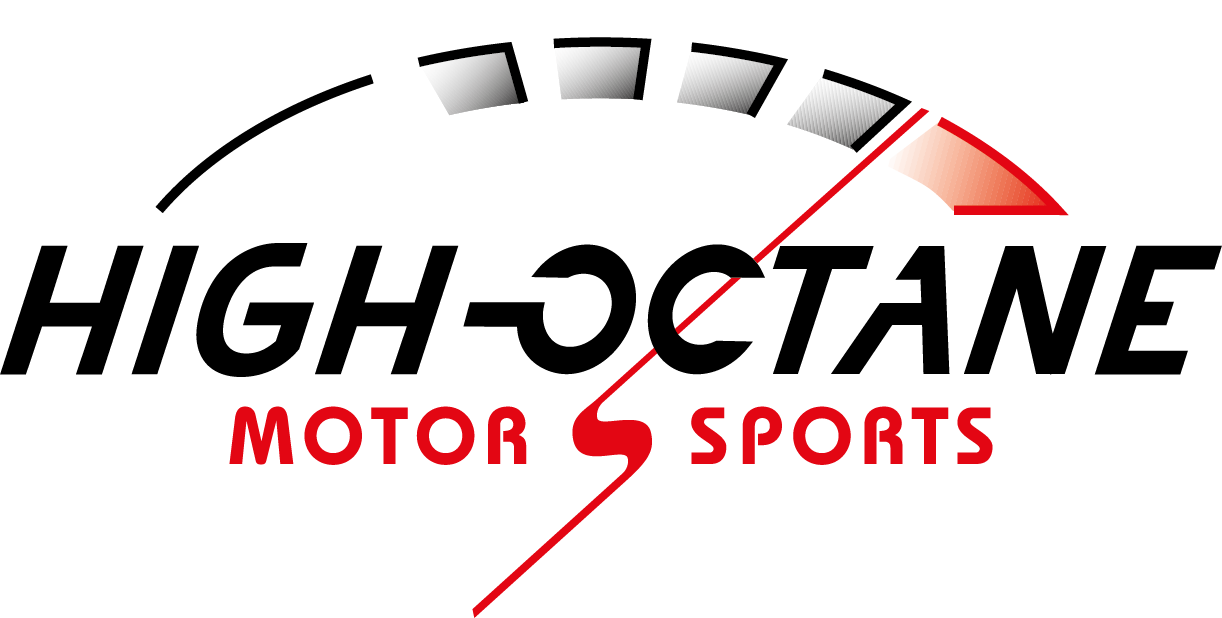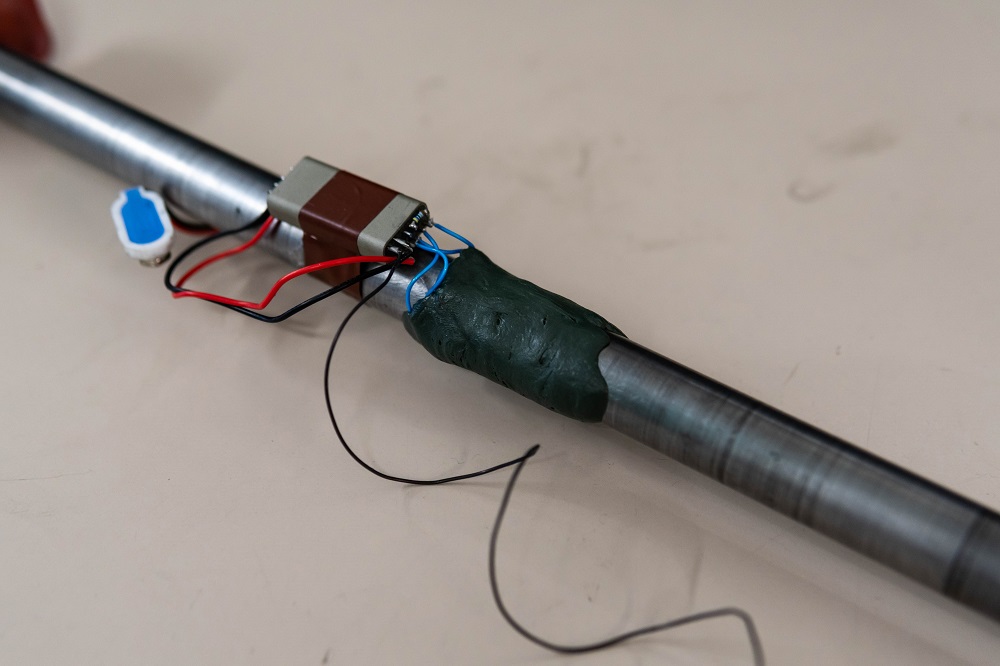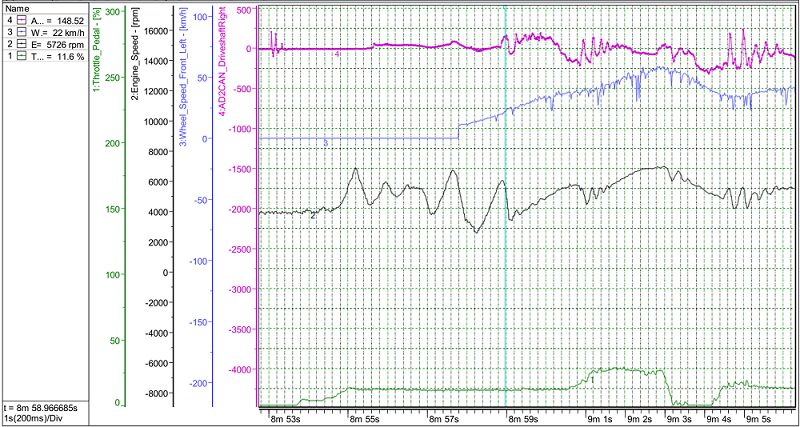Initial data could be collected in tests with the racing car on the track. They provided information on both the behaviour over time and the amount of torque applied to the drive shafts. The data log showed, for instance, the torque to a drive shaft, the speed, the engine speed, and the accelerator pedal position over time. This enabled the engine torque to be determined at any time during operation in the racing car. On the one hand, the power values of the engine on the test bench could be compared directly with those in the vehicle, thus enabling the transmission losses in the racing car to be calculated. On the other hand, this allowed changes in engine torque during the tests to be objectively detected. This enabled the quantification of the impact of changes in the internal combustion engine's application on the engine torque at certain rotational speeds and perfectly complemented the driver's feedback by ascertaining their assessment by numerical values.
High Octane- Torque Measurement of Drive Shafts
High-Octane Motorsports e.V. is the Formula Student team of the Friedrich-Alexander University Erlangen-Nuremberg (FAU). Formula Student is an international engineering design competition in which teams of students from different universities compete against each other in static and dynamic disciplines with the formula racing cars they designed and built.

Sensor data plays a central role in developing and driving a competitive racing car. For this reason, strain gauges are installed at the latest vehicle’s drive shaft to enable the torque of the internal combustion engine to be measured. Up to now, exact engine performance data could only be determined on the test bench but not during tests on the track. To achieve this, a lightweight and compact solution was required that could be integrated as easily as possible into the racing car and the electronic system.
Measurement setup
Strain gauges of type XY2/XY4 proved to be the right choice to meet these requirements since they enabled measuring the drive-shaft torsion for extrapolation of the torque applied to the drive shafts and the corresponding engine torque. The strain gauges were wired in a bridge circuit and connected to a battery-operated telemetry transmitter. The measured values could be recorded and stored using the vehicle's on-board telemetry receiver. The sensors were provided by HBM, and the telemetry equipment was provided by another manufacturer.
Installation
The DAK1starter kit from HBM was used to make strain gauge installation as easy as possible. The kit contained everything except the strain gauge that was required for measuring torsion in this application. Therefore, preparing the measuring points on the drive shaft and subsequently installing the strain gauges were very easy. After checking the strain gauges and connecting them to the telemetry transmitter, the measurement setup was covered to protect it from moisture and mechanical influences during its use in the harsh proving-ground environment. In this application, centrifugal forces on the rapidly rotating drive shaft also played a major role. The cables were strain-relieved using the X60 superglue included in the kit and fixed with textile tape using the AK22 covering agent. The setup was then calibrated for torsion and installed in the racing car.


Testing

Unexpected variations in engine performance could also be detected at an early stage and responded to accordingly. For instance, an incorrect chain tension could be detected. Furthermore, the drive shaft design could also be validated by torsion measurements; in particular, the stress peaks occurring in the drive train could be quantified. The collected data allowed for further optimization and, thus, reductions in weight. The collected data could also help adjust the differential gear. During cornering, the maximum transferable torque differed between the two powered rear wheels. The difference in torsion between the left and right drive shafts allowed the drive torque transferred to the respective wheel to be extrapolated and, thus, the optimum degree of locking of the differential to be determined and adjusted. The data obtained also helped optimize the self-developed lap-time simulation. This significantly supported design decisions and consequently the development of the racing car. The three performance values determined in the test run could be used to validate and further optimize the simulation model and to obtain even more precise simulation results.

The impact of various dynamic parameters on the achievable lap time could be calculated with as precise a simulation as possible. This information enabled future racing cars to be made even faster. The test runs for measuring the torsion using strain gauges on the racing car’s drive shafts during the previous season enabled the team to gain valuable insights which have proved to be very helpful in installing the strain gauges in the racing car under development. Along with the application in the drive train, there were also other areas, such as in the chassis, where stress and strain measurements allowed for optimization in terms of lightweight construction and stiffness. Due to the support of HBK who provided the required components, the young engineers of High-Octane Motorsports e.V. were able to gain valuable experience and insight into HBK’s product portfolio and the potential applications.